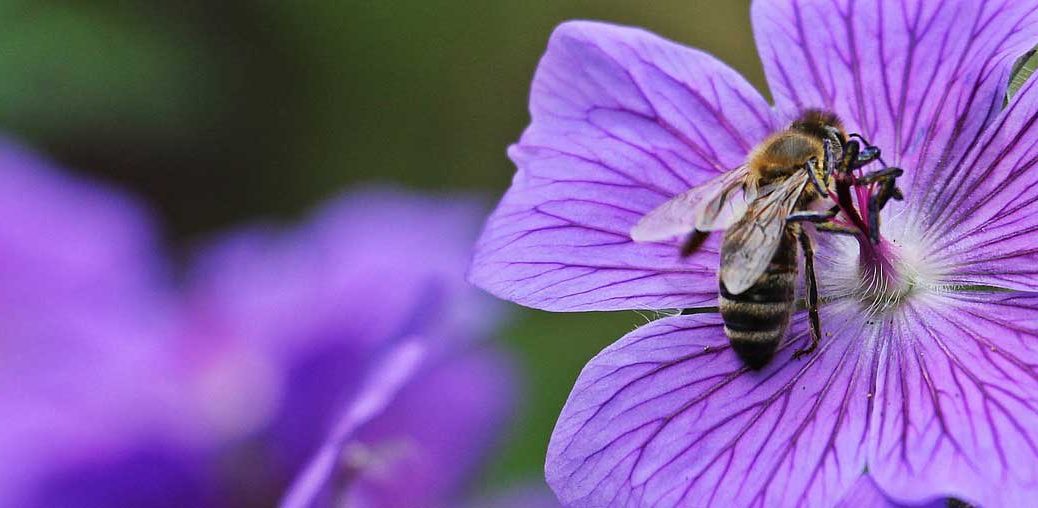The most important thing that bees do is pollinate. Pollination is needed for plants to reproduce, and so many plants depend on bees or other insects as pollinators.
When a bee collects nectar and pollen from the flower of a plant, some pollen from the stamens—the male reproductive organ of the flower—sticks to the hairs of her body. When she visits the next flower, some of this pollen is rubbed off onto the stigma, or tip of the pistil—the female reproductive organ of the flower. When this happens, fertilization is possible, and a fruit, carrying seeds, can develop.
How Do Plants Attract Bees?
Plants rely on bees and other insects to reproduce and so they have adapted, over time, to become more attractive to them. Bees are drawn to plants with open or flat tubular flowers with lots of pollen and nectar. A flower’s scent can have particular appeal to bees, and its bright colors may lure the bees in.
Effects of Bees on Fruit
Flowers that are visited more often by bees will produce larger and more uniform fruit than those visited less often. This beneficial effect of pollination is most obvious in tree fruit.
Types of Pollinators
Bees share the job of pollinating. Some plants are pollinated by other animals, wind or water. Plant flowers have adapted to the different pollinators.
Birds
Some birds, especially hummingbirds, pollinate plants. The plants that attract birds are generally brightly coloured, with red, orange or yellow flowers, but are often odourless, since birds have a poor sense of smell. The flowers are often long and tubular, with lots of nectar, and are sturdy enough for perching on.
Other Animals
Many animals that pollinate plants, such as bats, are nocturnal, meaning “active at night,” and so the flowers that need to attract them often have a strong smell, but may not be too colourful.
Wind
The wind pollinates many plants. Usually they have less colourful, unscented flowers and do not produce nectar. The stamens and pistils of these plants are often long. Their pollen is usually lighter in weight than other plant pollen. The wind carries the pollen from one plant to another.
Water
A small number of plants, particularly those in rivers and streams, are pollinated by water.

